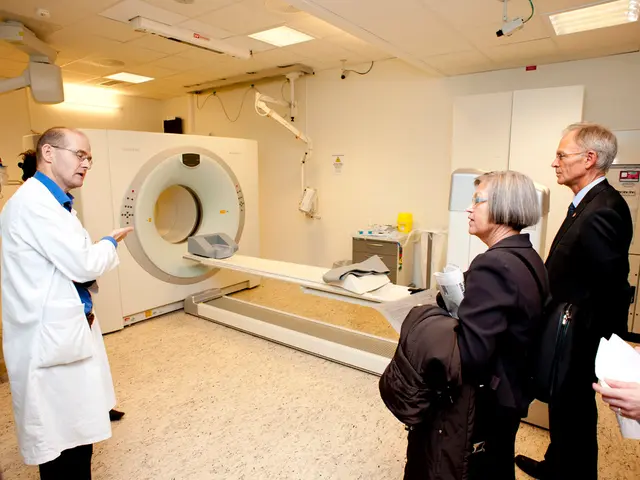Enhanced Security Measures for Knife Attacks: Consider these Four Strategies - Enhancing Safety: Potential Strategies to Prevent Stabbing Incidents:
Addressing the Rising Trend of Knife Attacks in Germany: Measures Proposed
Germany has witnessed a series of knife attacks recently, most recently the mass stabbing at Hamburg's central train station, which left 18 individuals injured. In light of these incidents, authorities and experts are seeking measures to curb knife violence.
Possible Strategies to Combat Knife Attacks
- Enhanced Video Surveillance with AI: The use of video surveillance, particularly in crowded areas like train stations, is expanding. AI-based systems are being trialed to detect irregular behavior patterns that could precede violent acts, with Hamburg's Hansaplatz serving as a test site for such technology.
- Increased Police Powers: There are calls for police to be authorized to carry out expanded checks with the aim of identifying potential knife-carrying individuals before incidents occur.
- Weapons Ban Zones: Some discussions revolve around establishing weapons-free zones in public spaces, although concerns about the implementation and effectiveness linger.
- Preventative Approaches in Schools: Experts emphasize the importance of identifying and addressing aggressive behavior at an early stage, particularly among youth, through preventive programs in schools.
- Targeted Early Intervention: Risk identification, such as recognizing previous aggressive tendencies, is crucial in preventing future knife crimes.
- Public Education and Community Engagement: Law enforcement and legal experts advocate for broader societal intervention, stressing the significant role of families and education institutions in teaching young people about the risks of carrying knives and the consequences of violence.
- Cultural and Social Interventions: Experts highlight the potential impact of cultural background on knife carrying and call for targeted measures to address these factors, including integration efforts and dialogue within immigrant communities.
Acknowledging Limitations
It's important to note that AI surveillance and increased police checks alone will not solve the problem. Perpetrators may not exhibit suspicious behavior until the moment of attack, and weapons can often be concealed. Also, weapons ban zones may be difficult to enforce, and they are not considered long-term solutions.
In summary, proposed strategies in Germany encompass a mix of technological, policing, and social interventions, with a strong emphasis on early prevention in schools and communities. Additionally, cultural and social factors are recognized as essential in addressing knife violence, while acknowledging the limitations of enforcement-only measures.
The community policy should incorporate an essential focus on public education and engagement, emphasizing the dangers of knife violence and the consequences of carrying weapons. Furthermore, the science of AI could be potentially employed in creating more effective health-and-wellness programs, addressing mental health concerns that might contribute to escalating aggressive behavior. Lastly, employment policies could be adjusted to provide opportunities and support for individuals from diverse cultural backgrounds, contributing to the general-news discourse about reducing knife crimes and promoting social justice in crime-and-justice matters.









